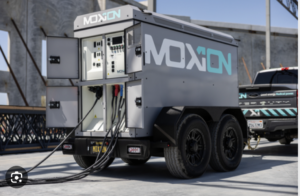Energy independence by 2020? The idea has been touted on the U.S. presidential campaign trail, but global home furnishings retailer Ikea is announcing plans Tuesday to achieve that goal with solar and wind power.
As more U.S. businesses go solar, the Swedish retailer says it will rely on the sun and wind to produce all the power it uses at its stores and buildings worldwide within a decade. It plans to install more rooftop solar panels, erect wind farms and reduce its energy usage by replacing 1.2 million incandescent light bulbs with 85%-more-efficient LEDs (light-emitting diodes.)
“Each roof is a power station in the making,” says Steve Howard, Ikea Group’s chief sustainability officer, adding that the United States has “fantastic sun … as good as anywhere in the world.” Ikea already has solar panels atop 34 of its 38 U.S. stores and distribution centers.
Howard says parts of the U.S. also have great wind potential, and Ikea, which is building wind farms abroad, would like one stateside. “But we find the policy environment rather choppy,” he says. Production tax credits for the U.S. wind industry are set to expire in December unless Congress renews them.
More: USA TODAY Environmental News
Ikea, which announced earlier this month that it will sell only LED light bulbs in its stores by 2016, is not the first retailer to shoot for 100% renewable energy. Walmart has also set that goal (without specifying a timeline), and it ranks first among U.S. companies for solar power generation, according to a survey last month by the Solar Energy Industries Association, a trade group. Costco Wholesale ranked second, Kohl’s Department Stores, third, Ikea, fourth and Macy’s, fifth.
“The devil is in the details,” says Joel Makower, executive editor of GreenBiz.com, which covers corporate sustainability efforts, about Ikea’s plans. “It’s great a company is trying to get its own house in order, but its house is more than its buildings,” he says, adding that more than 90% of the total energy that retailers use is embedded in the supply chain — the making of and delivering of parts and products.
Makower says renewable energy is no longer just about scoring public relations points. “It’s about mitigating risks,” he says, referring to the uncertainties of energy prices and supplies.
Howard agrees. He says Ikea, which phased out plastic bags in 2007 and stopped selling incandescent bulbs in 2010, believes energy independence is “the right thing to do,” not only because it’s concerned about climate change but also because it wants to protect itself against higher energy prices in the future.
“Sustainability will decide the winners and losers in the business community,” Howard says.
GOP presidential candidate Mitt Romney has talked about North American energy independence by 2020, but his agenda has focused on getting there by expanding domestic oil, gas and coal production. He’s called for phasing out subsidies for solar and wind, which President Obama has supported.
Renewables may be out of favor in some political circles, but “it’s corporations that are pushing the boundaries” to embrace them, says Ron Pernick, author of Clean Tech Nation: How the U.S. Can Lead in the New Global Economy. Because of the recent plunge in prices for buying and installing solar panels, he says Ikea’s goals are “achievable.”


 Moxion and NUE
Moxion and NUE